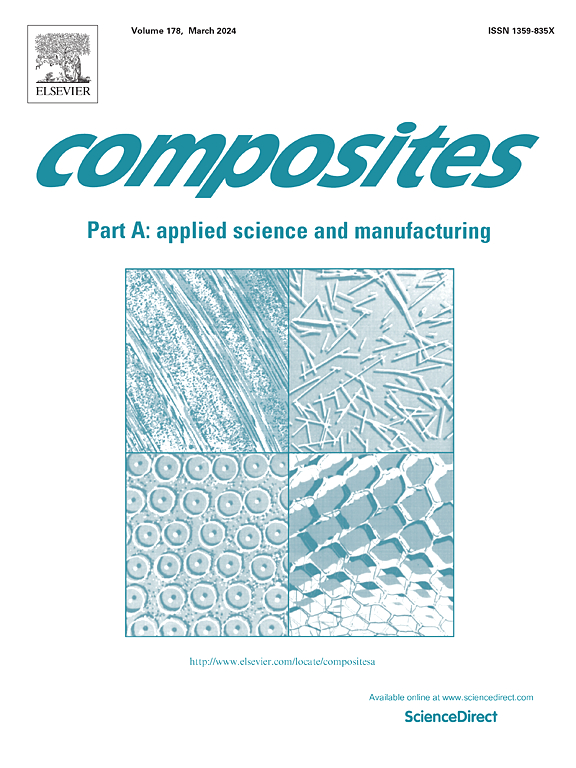利用新型流固耦合模型分析 IV 型储氢容器聚合物内衬的快速减压故障
IF 8.1
2区 材料科学
Q1 ENGINEERING, MANUFACTURING
Composites Part A: Applied Science and Manufacturing
Pub Date : 2024-10-15
DOI:10.1016/j.compositesa.2024.108531
引用次数: 0
摘要
目前已开发出用于储氢系统的 IV 型容器,但减压过程中的快速减压失效会导致内衬坍塌,从而大大缩短容器的使用寿命。本研究旨在研究 IV 型储氢容器中聚合物内衬的非线性屈曲行为和崩溃机制。考虑到氢气减压与容器机械行为之间的内在耦合,利用流体空腔技术和 HyperMesh 提出了 IV 型容器减压过程的流固耦合模型。结果表明,内衬上产生的压力差是导致聚合物内衬坍塌的主要原因。临界压力差随着衬垫厚度的增加而明显增大,同时随着空隙缺陷尺寸的增加而非线性减小。参数敏感性分析突出表明,初始空隙缺陷深度和衬垫厚度是临界减压率的两个重要影响因素。本文章由计算机程序翻译,如有差异,请以英文原文为准。
Analysis of rapid decompression failure in polymer liner of Type IV hydrogen storage vessels using a novel fluid–solid coupling model
Type IV vessels have been developed for hydrogen storage systems, but the rapid decompression failure during the decompression process can lead to the collapse of the liner, significantly reducing the lifespan of vessels. This study aims to investigate nonlinear buckling behaviors and collapse mechanisms of polymer liner in Type IV hydrogen storage vessels. Considering the intrinsic coupling between hydrogen gas decompression and mechanical behavior of vessels, a fluid–solid coupling model for the decompression process of Type IV vessels was proposed using the fluid cavity techniques and HyperMesh. Results indicated that the pressure difference generated on the liner is the primary cause leading to the polymer liner collapse. The critical pressure difference significantly increases with the thickness of the liner, while it decreases nonlinearly with the increase in void defect size. Parametric sensitivity analysis highlighted the depth of initial void defect and the liner thickness as two significant influencing factors in the critical decompression rate.
求助全文
通过发布文献求助,成功后即可免费获取论文全文。
去求助
来源期刊

Composites Part A: Applied Science and Manufacturing
工程技术-材料科学:复合
CiteScore
15.20
自引率
5.70%
发文量
492
审稿时长
30 days
期刊介绍:
Composites Part A: Applied Science and Manufacturing is a comprehensive journal that publishes original research papers, review articles, case studies, short communications, and letters covering various aspects of composite materials science and technology. This includes fibrous and particulate reinforcements in polymeric, metallic, and ceramic matrices, as well as 'natural' composites like wood and biological materials. The journal addresses topics such as properties, design, and manufacture of reinforcing fibers and particles, novel architectures and concepts, multifunctional composites, advancements in fabrication and processing, manufacturing science, process modeling, experimental mechanics, microstructural characterization, interfaces, prediction and measurement of mechanical, physical, and chemical behavior, and performance in service. Additionally, articles on economic and commercial aspects, design, and case studies are welcomed. All submissions undergo rigorous peer review to ensure they contribute significantly and innovatively, maintaining high standards for content and presentation. The editorial team aims to expedite the review process for prompt publication.
 求助内容:
求助内容: 应助结果提醒方式:
应助结果提醒方式:


